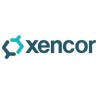
Envafolimab Plus Chemoradiotherapy for Locally Advanced NPC, a Prospective, Single Armed Phase II...
Locally Advanced Nasopharyngeal CarcinomaEnvafolimab2 morePatients diagnosed with locally advanced nasopharyngeal carcinoma will be recruited in this study. All the patients will get 3 cycles of GP+ Envafolimab for the induction chemotherapy. After that, the patients will receive concurrent chemoradiotherapy. Radiotherapy will be given by IMRT, under the dose of GTVnx 68-70Gy/30-33f, 5d/w,6-7w, during which, every patient would receive 2 cycles of DDP+Envafolimab as concurrent chemotherapy. Then patients would receive Envafolimab every 3 weeks for maintenance treatment for a year, until disease progression or intolerance of treatment. . We aim to evaluate the three years progression free survival of these patients by the combination of Envafolimab with curative chemoradiotherapy.

Efficacy and Safety of T+A+RAD in HCC
Hepatocellular CarcinomaThis is An Open-label, Single-arm Exploratory Study to determine the efficacy and safety of Multifocal Stereotactic Radiotherapy Combined with Atezolizumab and Bevacizumab in the Treatment of Metastatic Hepatocellular Carcinoma

Tislelizumab in Combination With Chemotherapy for Conversion Therapy of Locally Nonresectable ESCC...
Esophageal Squamous Cell CarcinomaLocally Advanced CarcinomaThis is a single-arm,open-label study to evaluate the efficacy and safety of tislelizumab plus chemotherapy for conversion therapy of patients with locally nonresectable ESCC.

Testing the Use of Ado-Trastuzumab Emtansine Compared to the Usual Treatment (Chemotherapy With...
Metastatic Salivary Gland CarcinomaRecurrent Salivary Gland Carcinoma3 moreThis phase II trial tests whether ado-trastuzumab emtansine works to shrink tumors in patients with HER2-positive salivary gland cancer that has come back (recurrent), spread to other places in the body (metastatic), or cannot be removed by surgery (unresectable). Trastuzumab emtansine is a monoclonal antibody, called trastuzumab, linked to a chemotherapy drug called emtansine. Trastuzumab attaches to HER2 positive cancer cells in a targeted way and delivers emtansine to kill them. Trastuzumab emtansine may work better compared to usual treatment of chemotherapy with docetaxel and trastuzumab in treating patients with salivary gland cancer.

Evaluation of 177Lu-DOTA-EB-FAPI in Patients With Metastatic Radioactive Iodine Refractory Thyroid...
Refractory Thyroid Gland CarcinomaRefractory Thyroid Gland Papillary Carcinoma2 moreIncreased fibroblast activation protein expression is positively correlated with the dedifferentiation and aggressiveness of thyroid cancer. Radiolabeled fibroblast activation protein inhibitor therapy, also known as radioligand therapy has become a novel treatment for patients with radioactive iodine refractory thyroid cancer and disease progression after first-line treatment. However, a major problem in the therapeutic use of 177Lu-DOTA-FAPI has been its short half-life and fast rate of clearance. This study was designed to evaluate the safety, tolerability, and maximum tolerated dose of a long-lasting radiolabeled fibroblast activation protein inhibitor 177Lu-DOTA-EB-FAPI in mRAIR-TC patients with PD after TKIs treatment.

A Prospective, Single-arm Clinical Study of Pabrolizumab in Combination With Cisplatin + 5-FU for...
Temporal Bone Squamous Cell CarcinomaTemporal bone cancer accounts for 0.2% of head and neck cancers. Advanced temporal bone cancer often involves structures such as apices, internal carotid artery canals, and dura mater, and negative margins cannot be obtained during surgery. The recurrence rate after surgery is as high as 70%, and the 2-year survival rate is only 11%. Crestor, or paprolizumab, is a monoclonal antibody to PD1 that blocks the interaction between PD1 and the dura mater. The NCCN guidelines recommend that paprolizumab be used in combination with platinum-based anti-tumor agents. The NCCN guidelines recommend pablizumab in combination with platinum and 5-FU for the first-line treatment of recurrent, unresectable head and neck squamous carcinoma, but this regimen is not recommended for the treatment of recurrent, unresectable head and neck squamous carcinoma. This study is intended to investigate the use of pablizumab in combination with platinum and 5-FU for the first-line treatment of recurrent unresectable squamous head and neck cancer. This study investigates the effectiveness of pablizumab in combination with cisplatin and 5-FU for the adjuvant treatment of recurrent, unresectable temporal bone cancer. temporal bone cancer.

Tepotinib Plus Paclitaxel in MET Amplified or MET Exon 14 Alterated Gastric and GEJ Carcinoma
Gastric CancerGastroesophageal-junction CancerPurpose of this study is to define the maximal tolerated dose (MTD) and recommended phase 2 dose (RP2D) of paclitaxel and tepotinib combination therapy in patients with advanced tumors and to evaluate the efficacy of paclitaxel and tepotinib combination treatment as second-line therapy in patients with advanced gastric and gastroesophageal junction carcinomas (AGC/GEJCs) with MET amplification or MET exon 14 alterations. This study is devided into Phase 1b and Phase 2 study.

Study of XmAb®819 in Subjects With Advanced Clear Cell Renal Cell Carcinoma
Clear Cell Renal Cell CarcinomaThe purpose of this study is to assess the safety and tolerability of XmAb®819 administered intravenous (IV) or subcutaneous (SC) in subjects with relapsed or refractory clear cell renal cell carcinoma and to identify the minimum safe and biologically active dose and the recommended dose (RD).

Tilelizumab Combined With Nab-Paclitaxel for High-Risk Non-Muscle-Invasive Urothelial Bladder Carcinoma...
High-Risk Non-Muscle Invasive Bladder Urothelial CarcinomaThis is a phase II study to determine the safety and efficacy of tislelizumab when given in combination with nab-paclitaxel as treatment for patients with high-risk non-muscle-invasive bladder cancer (HR NMIBC) which is not completely resectable. Patients will receive treatment with tislelizumab in combination with nab-paclitaxel every 3 weeks for 4 treatment cycles over 12 weeks followed by transurethral resection biopsy.

Clinical Study on the Re-irradiation of Lateral Pelvic Recurrences of Gynecological Malignancies...
Tumor RecurrenceMalignant Epithelial Neoplasm of Vulva2 moreThe study aims to obtain a local control rate in patients with lateral pelvic relapses of gynecologycal cancers previously irradiated. High LET (Linear Energy Transfer) particles as carbon ions can guarantee a biologic advantage compared to photons in radioresistant neoplasms, given to their higher biological efficacy (RBE).
